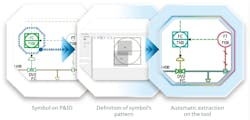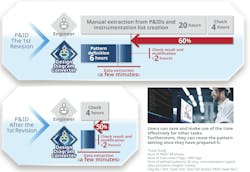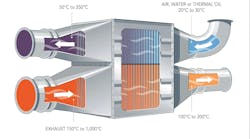For all of the advances in industrial automation technology over recent decades, launching a major unit or plant upgrade, or building an entirely new plant, can be a very challenging proposition for many companies. While actual statistics are scarce, many projects invariably go over budget and take more time to complete than expected. The result is increased project costs, made worse by delayed startup that creates a cashflow gap as expected income is pushed out into the future.
Many software tools have been created to help with all manner of plant design and project management/scheduling, and these often help, but incompatibilities of processes and methods often create gaps in the timelines. Bridging those gaps requires many manual operations to connect all the divisions of a company and its partners into a comprehensive plan, and these manual hand-offs are frequently the source of problems. Delays caused by data incompatibilities and other manual rework leave actions unfinished, plus materials missing or mis-specified.
Fortunately, a solution for these and related issues is now available, as described next.
Issues with instrumentation lists
A prime source of problems is creating instrumentation lists from piping and instrument diagrams (P&IDs). Accurate instrumentation lists are needed because these documents are used to specify and purchase instruments, and for other purposes, including:
- Determining networking requirements for control systems, to which instruments are typically connected.
- Designing the mounting details for each instrument.
- Designing the portions of the piping systems to which instruments are connected and/or inserted.
- Making sure flow elements inserted into piping systems have adequate downstream and upstream piping runs.
- Making provisions for the installation of impulse lines for certain types of pressure instruments.
- Designing thermowells for the thermocouples and RTDs associated with temperature instruments.
- Ensuring all vessels have provisions for installing the process penetrations required by most level instruments.
- And many other design details.
Even if P&IDs from which instrumentation lists are flawlessly accurate, engineers responsible for creating designs based on specifications they show must extract sufficient information to create detailed and accurate instrumentation lists. To compound this problem, engineers skilled in this type of work are in short supply at many companies.
Getting from 2D CAD drawings to flawless instrumentation lists, with potentially thousands of individual line items, is fraught with opportunities for mistakes and omissions. To make matters worse, if there are alterations to the P&IDs affecting instrumentation lists, changes must pass back-and-forth, requiring extensive manual handling.
Addressing the issues
To address this and other issues, Yokogawa is at the forefront of the transition from Industrial Automation to Industrial Autonomy (IA2IA), which in this case can be used to improve process plant design activities through the use of digital technologies.
To solve this problem Yokogawa provides OpreX Data Model Broker with its Design Diagram Converter data conversion tool. OpreX Data Model Broker is a data transformation platform that makes use of the ontology artificial intelligence (AI) technique to convert and verify data that is scattered across various systems. Ontology is an AI mechanism for defining the meaning of information, allowing computers to mimic how humans understand and make associations within complex data.
Design Diagram Converter is a data conversion tool able to read P&IDs created with 2D CAD software, and then automatically generate P&IDs and various documents — including instrumentation lists, piping line lists and piping material takeoffs — each of which can be processed by computers.
In this context, the data conversion tool can read P&IDs created with various 2D CAD software tools using normal design techniques. It can then convert them to a common industry format, ISO 15926, to overcome any format incompatibilities. More importantly, it automatically generates computer-processable P&ID data, along with the documents listed earlier. With this capability to automate plant engineering work that previously had to be done by hand, manual tasks are minimized through digital conversion technology in a very critical area.
Software solutions
P&IDs play an essential role not only in design and construction, but also in the operation, maintenance and modification of all types of process plants, including chemicals, life sciences, oil and gas, and others. Process engineers create P&IDs to help personnel tasked with implementing and operating plant instrument, piping and machinery, but these diagrams are intended primarily for viewing on paper or a computer screen.
They are rarely optimized for computer processing, which is necessary for frequent information exchanges when P&IDs make the transition to subsequent engineering departments. In such cases, it is necessary to have a team of specialists manually extract and process the data, introducing many opportunities for errors, omissions and other quality issues.
To address this issue, all the P&ID CAD files are imported into the data conversion tool. With high accuracy, this software reads P&IDs created with all common conventional 2D CAD software tools. The tool then creates data using the pattern analysis of symbols on P&IDs, and using this data, it can export P&IDs in an ISO15926 compliant XML format, and it can create various lists.
Conditions are defined for shapes to be detected and the parts that make up the shapes, as well as settings for the connection relationships with other detected shapes, and so forth. In situations where interpretation of information on a P&ID is necessary, the software will present the choices to human operators, instead of leaving the decision to an algorithm. For example, users can freely adjust pattern settings (Figure 1), and then generate a list with high extraction accuracy.
It is important to distinguish between adjustments to pattern settings, which is a relatively simple process, and AI. Although AI operates behind the scenes, plant personnel working with the data conversion tool do not need AI tuning or other expertise, and it is much easier to adjust pattern settings than it is to perform AI tuning. High accuracy conversion is the result because users can customize pattern setting in detail.
This creates an instrumentation list up to 60% faster than with traditional manual methods (Figure 2). Once edited patterns are created, they can be retained and used again, or adjusted as needed based on the results of checking.
The result is an instrumentation list created in less than half the time of manual methods, even including checking. By automating a task that previously had to be done manually, the workload is significantly decreased, while quality is assured through reduction of human error by using digitalized engineering work processes.
Digital transformation at all levels
The digital tools described in this article are being used by process manufacturers and their staff as they continue on their digital transformation journeys. As with all such tools, automating manual tasks to eliminate errors, increase productivity and speed project completion is a critical component. These and other steps on the digital transformation journey will help process manufacturers stay competitive, while attracting a workforce eager to use the most advanced software tools.
Ryusuke Yokoyama is a sales promotion manager for OpreX Data Model Broker with Yokogawa Electric Corporation. Since joining Yokogawa in 2000, he has been involved in sales and project execution for integrated control systems. Yokoyama uses his experience to lead product planning and development, combining customer requirements with the latest technology available to achieve optimal results.
Yuichi Ishida is responsible for sales promotion of system products with Yokogawa Electric Corporation. He was a web engineer before coming to Yokogawa in 2020, where he made a career change to sales promotion, especially through content marketing. Ishida is mainly engaged in the preparation of brochures, eBooks, press releases, and promotional videos for system products, including Design Diagram Converter.
Yokogawa Electric Corporation




